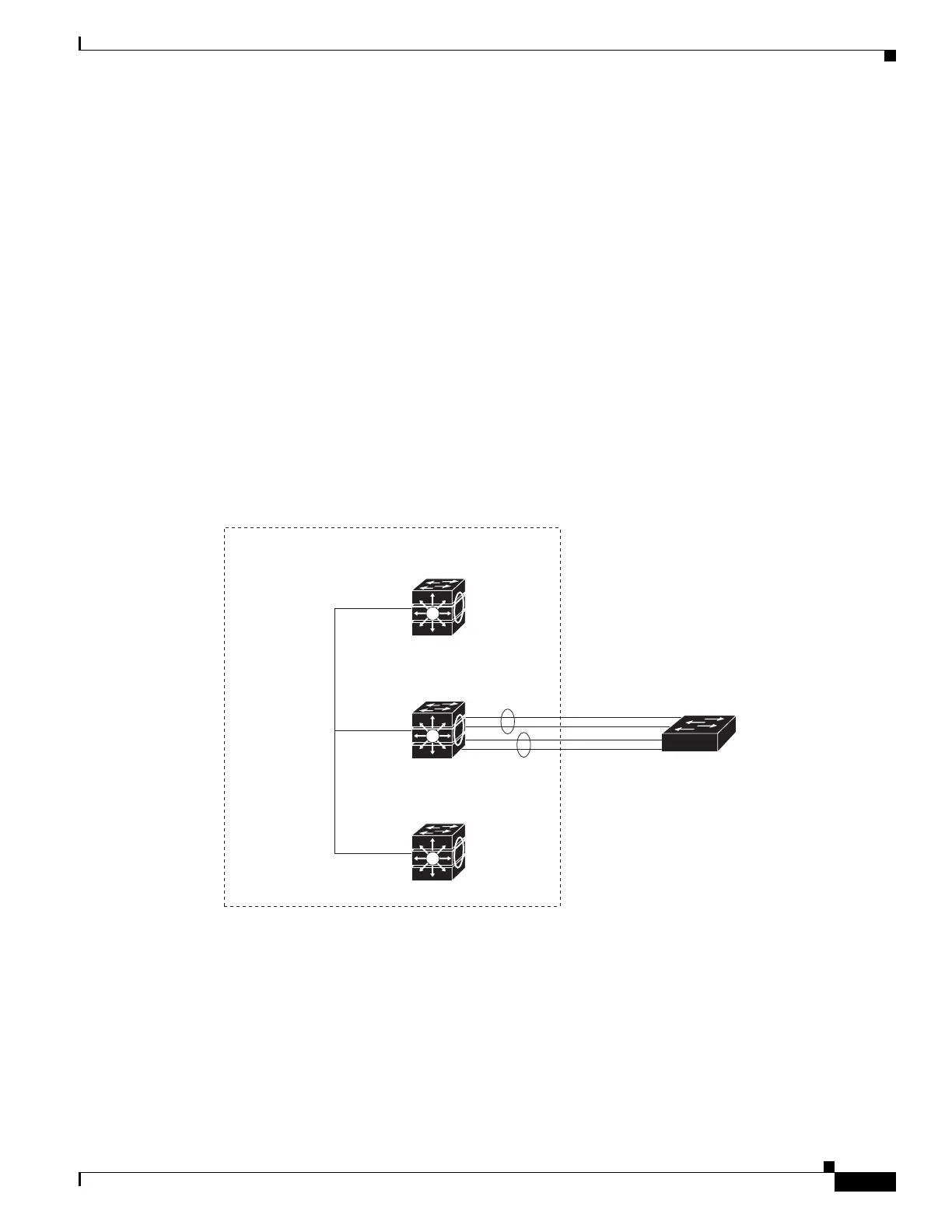1-3
Catalyst 3750-X and 3560-X Switch Software Configuration Guide
OL-25303-03
Chapter 1 Configuring EtherChannels and Link-State Tracking
Understanding EtherChannels
You can configure an EtherChannel in one of these modes: Port Aggregation Protocol (PAgP), Link
Aggregation Control Protocol (LACP), or On. Configure both ends of the EtherChannel in the same
mode:
• When you configure one end of an EtherChannel in either PAgP or LACP mode, the system
negotiates with the other end of the channel to determine which ports should become active. If the
remote port cannot negotiate an EtherChannel, the local port is put into an independent state and
continues to carry data traffic as would any other single link. The port configuration does not
change, but the port does not participate in the EtherChannel.
• When you configure an EtherChannel in the on mode, no negotiations take place. The switch forces
all compatible ports to become active in the EtherChannel. The other end of the channel (on the other
switch) must also be configured in the on mode; otherwise, packet loss can occur.
You can create an EtherChannel on a standalone switch, on a single switch in the stack, or on multiple
switches in the stack (known as cross-stack EtherChannel). See Figure 1-2 and Figure 1-3.
If a link within an EtherChannel fails, traffic previously carried over that failed link moves to the
remaining links within the EtherChannel. If traps are enabled on the switch, a trap is sent for a failure
that identifies the switch, the EtherChannel, and the failed link. Inbound broadcast and multicast packets
on one link in an EtherChannel are blocked from returning on any other link of the EtherChannel.
Figure 1-2 Single-Switch EtherChannel
Switch 1
Switch stack
Switch 2
Channel
group 1
Channel
group 2
StackWise Plus
port
connections
Switch 3
Switch A
159893
